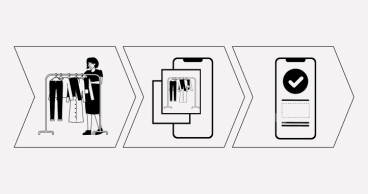Qvalon Blog article content
Most businesses that connect with us, have zero or incomplete knowledge about setting correct standards against which operational efficiency is measured. At QVALON, we diligently coordinate with businesses to set the the right standards that are as per the existing work processes. We also found that organizations that have ISO accreditation or are planning to have it in the near future have better understanding of implementing the correct standards as per benchmarks. So to assist companies, here is the article on ISO 14000, the latest in the ISO standards series.
It will help companies realize the importance of ISO 14000, its benefits, how to apply for its accreditation and how QVALON can assist them in the entire journey of achieving ISO 14000 certification.

What is ISO 14000?
ISO 14000 is a set of global standards that help organizations across the world limit and reduce the adverse effects of their operational activities on the environment. It is a set of environmental management standards (EMS) that ascertains how companies, irrespective of size, location and nature, can adopt environmental consciousness into their operations, services, and products.
It is to be noted that the standard itself does not propose or set any environmental goals for the organizations, instead it empowers them with tools to measure the impact of their operational activities on the environment. This in turn helps them find best ways to reduce the negative impact to achieve a greener work culture.
One crucial aspect of ISO 14000 series in its latest version is that it defines the requirement for a functional EMS. This is important as it covers all environmental challenges, including the latest ones, highlights sustainable development, and environmental protection from risk and destruction.
What is an Environmental Management System (EMS)?
It is a framework of procedures to assist organizations meet their environmental goals and regulatory protocols in a cost-effective way via regular audits, training, and upgrades.
The EMS does not impose any external environmental targets or performance levels, insteads it helps each organization achieve the goals and objectives they have set for themselves. It effectively provides the company a structure using which its performance can be reviewed, managed, and enhanced from an environmental perspective.
Traits of an effective EMS are that it,
-
defines environmental duties for all employees, across the organizational hierarchy;
-
identifies ways to reduce waste;
-
lowers the probability of being fined due to non-compliance with National environmental policies and protocols;
-
ensure all operational procedures are structured such that their execution has the least possible impact on the environment;
-
Keep track of performance level specific to effects on environmental health.
As per US EPA’s recommendations, the basic elements of an EPS can include:
-
Defining environmental goals that are in resonance with legal requirements that eventually reduces negative footprint on the environment.
-
Monitoring and auditing the environmental targets that an organization has set for themselves.
-
Planning methodologies to achieve the defined targets.
-
Ensuring that the entire workforce is aware of the company’s environmental goals as a whole along with their individual responsibilities and duties.
Latest Version ISO 14000
ISO 14000 latest version is a revision of ISO 14001, which was published in 2015. Within the ISO 14000 series, the ISO 14001 standard details EMS structure that helps businesses effectively monitor and manage the environmental impacts of their operational activities.
One of the main factors that distinguishes ISO 14001:2015 from the earlier versions of ISO 14000 is that it includes an additional top-level element in a new arrangement, while the earlier version, ISO 14001:2004 has 6 structural elements.
Comparison of ISO-14001 2004 and 2015
| ISO 14001:2015 |
ISO 14001:2004
|
|---|---|
|
1. Context of the Organization |
1. General |
|
2. Leadership |
2. Policy |
|
3. Planning |
3. Planning |
|
4. Support |
4. Implementation and Operation |
|
5. Operation |
5. Checking |
|
6. Performance Evaluation |
6. Management Review |
|
7. Improvement |
|
Relationship between ISO 14000 and ISO 9000
In 1987, the ISO issued a different set of management standards known as the ISO 9000 series. thar focusses on quality in design, development, production, inspection, testing, installation, and servicing of products. In short, the standards are drafted to improve quality management practices (QMS).
Both ISO 9000 and ISO 14000 are process standards and not performance standards. Performance standards are defined by the organization themselves and the standards help them achieve it. Both series encourage the existence of management systems with a company that promote preventive action instead of corrective action.
Still there are four major aspects on which the ISO 14000 series can be distinguished from the 9000 series.
-
ISO 14000 series needs a more thorough execution. It motivates organizations to achieve consistent improvements in their environmental performance.
-
Clauses of the 14000 series concerning environmental safety are closely controlled by governmental laws, regulations, and policies. As such any violation of the legal frameworks can invite serious repercussions like hefty fines and imprisonment.
Naturally, one of the most important goals of ISO 14000 series is to ascertain that businesses are in full compliance with their local environmental protocols. Compared to this, the quality aspect is less severely monitored by the legal framework. -
The 9000 series is to assist companies in maintaining quality as they design, manufacture, and provide a product or service to their customers. Thus, it focuses on the relationships between a company’s customers, vendors and employees. The ISO 14000 series is for various entities of interested parties or "stakeholders''. It is not just specific to businesses and their customers, but also legal authorities, environmental federations, consumer groups, and more.
-
The ISO 14000 series is a wholesome holistic approach that covers a broad area, with special emphasis on environmental impacts by emphasis on business activities and its environmental effects. Compared to that, the ISO 9000 covers the quality of management area which is of limited scope.
Implementation of ISO 14000: the Benefits
Implementing ISO 14000 standards across all departments and hierarchies if a company has many positives, most of which eventually translate to the company's commercial advantage.
Four key benefits are mentioned below.
-
Improving brand reputation.
A company projects environmental consciousness and responsibility to the masses. Environmentally responsible operations get appreciated quickly in current times. As such, implementing ISO 14000 or above standards assures all entities of a company’s non-commercial goals, which is a great way to foster personal relations in the professional world. -
Improving environmental performance and reducing waste.
EMS implementation helps companies realize previously ignored cost saving measures such as waste reduction, less energy usage, recycling and less usage of toxic raw materials.
Steps taken during EMS implementation reduces the chances of hazardous work conditions for employees, such as toxic spills that puts employees and others at risk. -
Improving compliance with legal requirements.
Companies hope that implementing ISO 14000 will bring more favorable treatment from regulatory agencies if their audits find any violations. A business’s expectation is reduced monitoring, less severe penalties for environmental law violations.
The regulatory agencies have responded by amending local environmental laws to provide such benefits to ISO 14000 or above certified companies. At the very least, a business benefits from improved relationships with environmental regulatory agencies which is valuable in many instances. -
Increased profitability, competitiveness and sustainability.
Implementing ISO 14000 can influence purchase decisions for a significant percentage of people. This can be a company’s new customers.
ISO 14000 implementation can pull investors to the company. An increasing number of private investors, investment companies, etc. prefer environmentally responsible businesses for association.
Some insurance companies provide the benefit of reduced rates on insurance coverage to accidental environmental violations, if the insured company has implemented EMS successfully.
ISO 14000 or above positively influences decisions of financial institutions. ISO 14000 certified companies can get easier loan clearances and protection from investor fraud allegations.
Obtaining ISO 14000 certificate
-
Assessment by the certification body.
The entire process can take anywhere between 3 months to 2 years, hence independent certification auditors often carry out their own assessment first. It is mainly aimed to review the company’s existing environmental management system, identify scope of improvement, and increase their readiness for the final ISO 14000 certification audit. -
Collection of the required documentation from the organization.
It is important for the company to not only record the areas of influence of environmental policy but also its objectives and plans. Thorough documentation of policy’s training, communication, planning, process monitoring, among other records is also unignorable. -
Certification body audit.
After the required documentation is compiled with the certifying body, they communicate the date of onsite visit to the organization under review. During these, external auditors access if data shown in reports exists in reality.It is normal for auditors to interview staff members to check if all reported information meets standard’s requirements. -
Organization decision on non-compliance.
Non-conformances are often identified during certification audits. They are classified as minor and major.
Inconsistent record maintenance and incorrect existing processes come under minor non-conformance and should be addressed within 60 days.
But major non-conformities to any ISO 14000 clause, such as lack of evidence of corrective actions, missing processes, etc. can lead to repeat of complete certification process. -
Certification by a certification body for an organization.
After non-conformities are addressed, and the corrective actions used are documented properly, upon which the certifying body concludes that the organization meets ISO 14000 standards, the relevant certification is issued which is valid for 3 years.
How to be ISO 14001 certified
-
Prepare and plan well.
Diligent planning and preparation by any organization that aspires to be ISO-certified. The efforts towards certification should avoid duplication so as to maximize time and money. Invest resources to review operational procedures and audit all data and documentation. -
Review the ISO 14001:2015 Standard.
All concerned entities, including C-suite, internal auditors, managers, etc. should be appropriately trained on the process of complete ISO 14000 certification procedure. Scope of EMS and its procedures gets defined in this stage as the employees become more aware of the ISO standards. -
Training.
Employees will be more motivated to participate in the certification process if they realize how their goals are aligned with those the company wants to achieve after it is certified. Knowledge of processes involved to improve EMS is also vital. This should be part of the training that would also cover understanding ISO standards, developing EMS, performance review, dealing with violations, etc. -
Perform internal audits.
The best way to be ready for certification is mock audits. As non-conformance detected in such audits are corrected and documented, every next audit will bring the company closer to conformance with all ISO standards.A digital audit checklist will greatly help to evaluate audit results, and plan next steps as per its analysis. -
Get Certified.
Associate with a recognized third-party certification body to assess EMS process and its adherence with ISO 14001:2015 standards.
How QVALON can help an organization achieve certification ISO 14001:2015
Businesses can replicate their entire operational processes, performance standards, employee hierarchies, departmental structure, and everything else on QVALON, a cloud based solution to manage, monitor and magnify businesses. Responsibilities and duties can be defined for every employee as per their job descriptions and work role.
Eventually, online audits can be executed seamlessly across the organization or in some departments as per need. Complicated operational procedures involving different employees from many departments can be broken down to an individual employee’s digital tasklist. Work done as per the same is reviewed against predefined standards. Failure to meet such standards is a violation which can be instantly spotted and quick actions can be taken to resolve it.
If a company is striving towards ISO 14000 certifications then these standards can be fed into QVALON against which the employee tasks will be measured, As non-conformances are addressed, with every next internal audit, the company moves closer to true conformance with ISO standards, eventually succeeding in implementing ISO 14000.
When the certification audit is conducted, the company is best positioned to succeed in the audit review and achieve environmentally responsible work ethic under ISO 14000:2015 certification.




